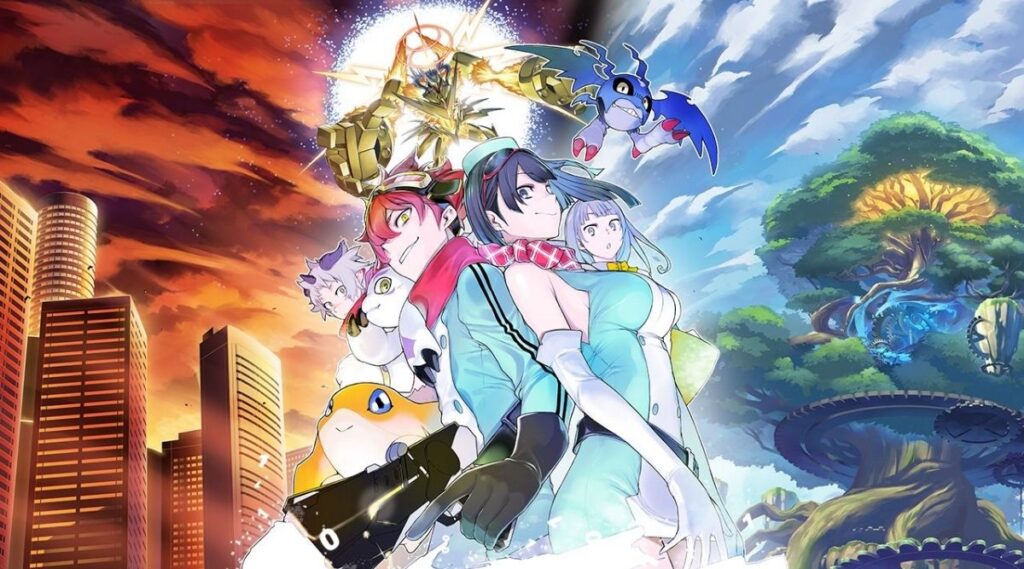The Digimon franchise has always been a slightly more niche entry in the turn-based monster battle genre. It never quite reached the heights that Pokémon did, but its loyal fan base has kept the passion alive for decades. Digimon Story Time Stranger is not a direct sequel to Digimon Story: Cyber Sleuth, but it builds on what the 2015 game introduced to create a genuine game-changer for the franchise.
Digimon Story Time Stranger‘s story puts players smack in the middle of an inter-dimensional war between different factions of monsters. On one side, you have a peaceful, harmonious collection of different groups all living and working together. On the other hand, you have the Titans set on war and destruction. The setup is nothing revolutionary, but there is plenty along the way that keeps it interesting.
This story takes place in both the human world and the digital one, focusing on the relationship between humans and the creatures known as Digimon. These relationships are a key component of Digimon Story Time Stranger, as players build on their relationships with their own Digimon as well as the Digimon and humans they encounter along the way. There is plenty of mystery, and the twists and turns are often unexpected and fun.
The world of Digimon Story Time Stranger is fully fleshed out as you explore.
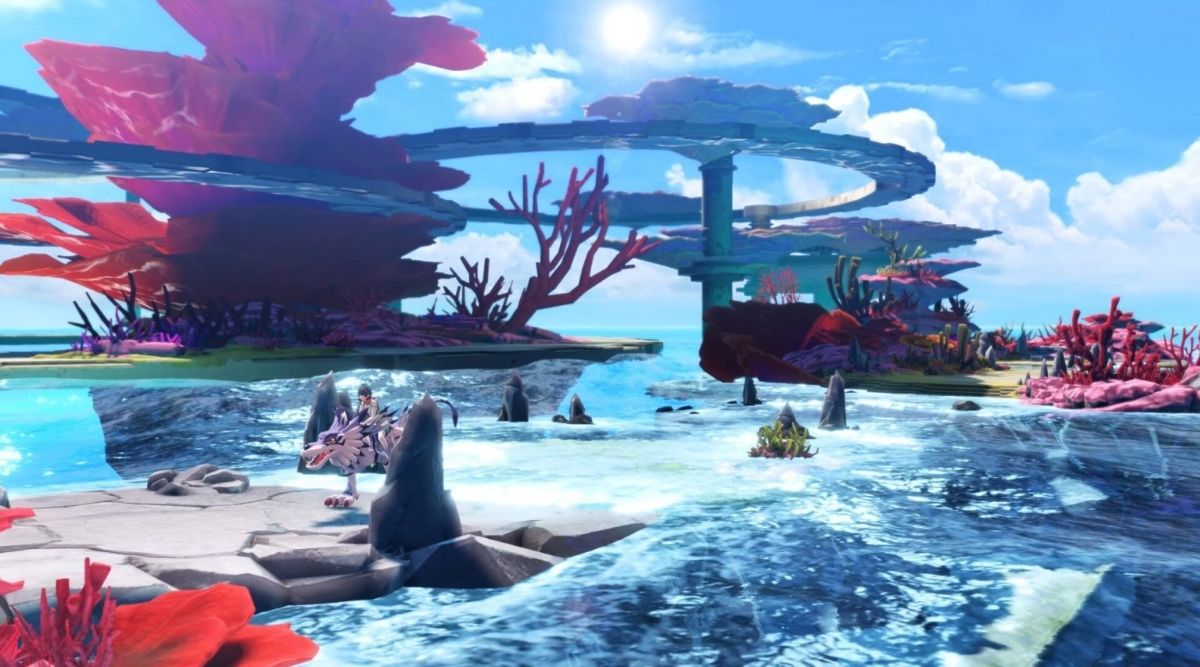
It helps that the story is fully voiced in English, including the voices of the Digimon. This brings the rest of the world to life, making it easier to connect with characters on an emotional level. Even side characters that don’t necessarily matter as much still feel important thanks to the quality of the writing and performances.
The player character is the only one not voiced, which is a bit of a disappointment. However, the silent protagonist was an intentional decision by the developers at Media.Vision to allow players to feel like they truly were the character.
The world is also fully fleshed out, which helps enhance immersion in the story. Dungeons are unique and interesting, and there is plenty to uncover. I am typically the type of player who breezes through areas without searching for secrets and side content, but the way the world of Digimon Story Time Stranger is set up makes it really fun to explore and discover new things.
Between the three Digimon types and the various elemental weaknesses, every battle is a new challenge.
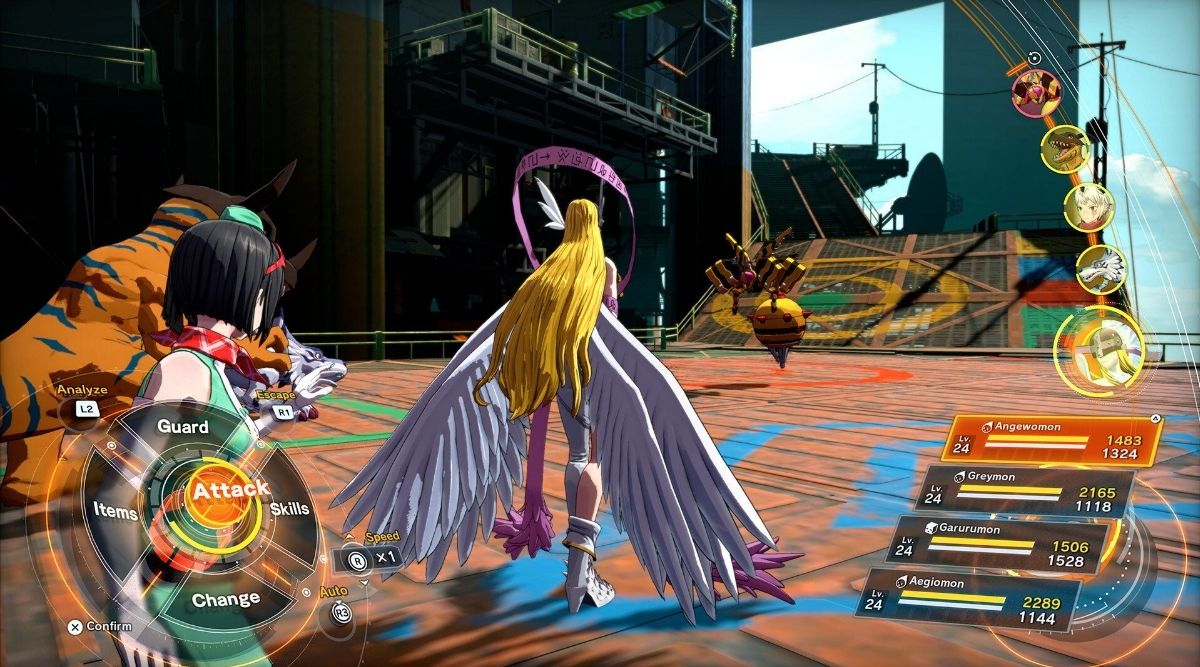
Visual backdrops are vibrant and exciting, bringing the human and digital worlds to life. The stylized designs of the buildings, humans, and Digimon are all unique enough to keep it from ever feeling stale. It’s great that every area feels new and distinct, rather than being a slightly reskinned version of previous locales.
While all of that is great, the best part of Digimon Story: Time Stranger is found in its gameplay. The core rock-paper-scissors loop returns, featuring three different Digimon types that each have distinct strengths and weaknesses. Add in the various elemental weaknesses, and you get a fairly complicated system with plenty of options for each battle.
This helps limit the amount of “meta” team compositions when coming up with which four active Digimon to have. Since the various enemies are often quite different, Digimon Story Time Stranger encourages players to mix and match their team builds before and during combat. The ability to switch Digimon in battle without a penalty is a massive plus as well, making a complex system slightly easier to master.
With over 400 Digimon, Digimon Story: Time Stranger has countless paths towards completion.
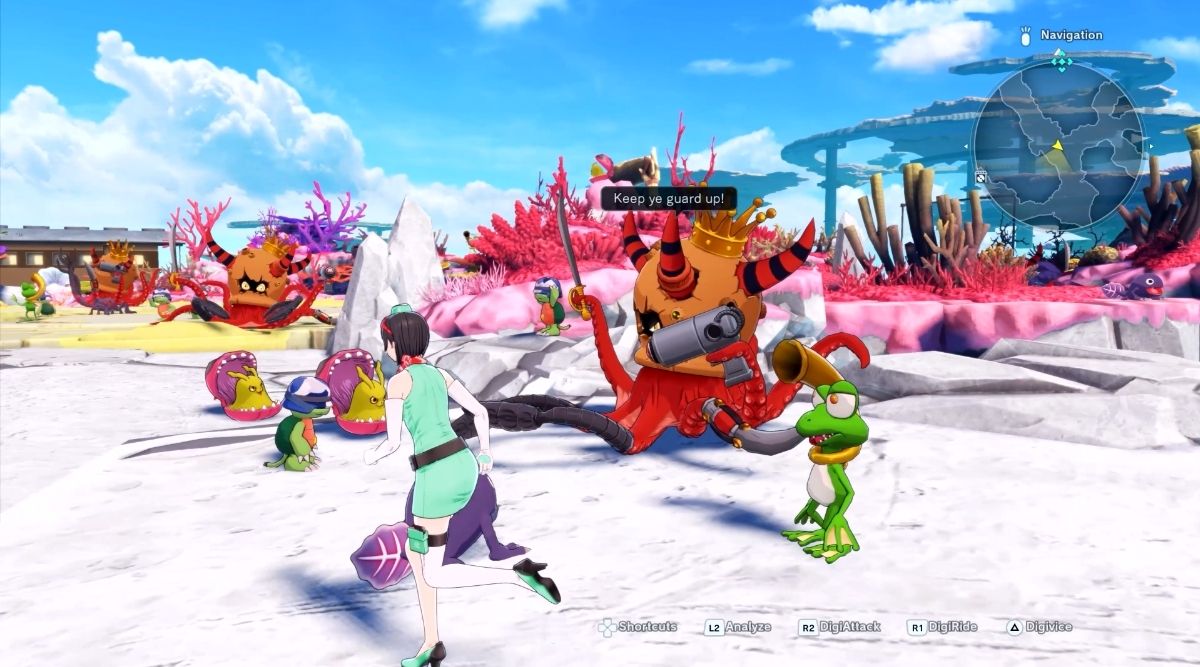
Every bit of strategy matters because some of the battles in Digimon Story Time Stranger are downright nasty. Even early on in the game, difficult battles are waiting for players that will really test their skills. Sending out your Digimon to defeat roaming enemy Digimon is great, until you accidentally come across one that is ready to demolish your team from the start.
Speaking of encounters in the wild, Digimon Story: Time Stranger has removed random encounters in favor of a system that has all of the Digimon walking around the world. This makes it easy for players to control how they approach combat and even forces them to be more strategic about navigating a dungeon. Knowing which enemies to expect gives players more control over the amount of action they engage in, and avoids getting hamstrung by random battles getting thrown in.
Finding, evolving, and mastering your various Digimon is a complex and intricate system. Different personality traits change how your Digimon grow, meaning each of the over 400 unique monsters has multiple paths to approach. It can seem a bit overwhelming at first, but Digimon Story Time Stranger has an excellent tutorial, and the menus are clear enough to help players with less experience still have a good time with this system.
Digimon Story Time Stranger is a perfect entry point for newcomers to the series.
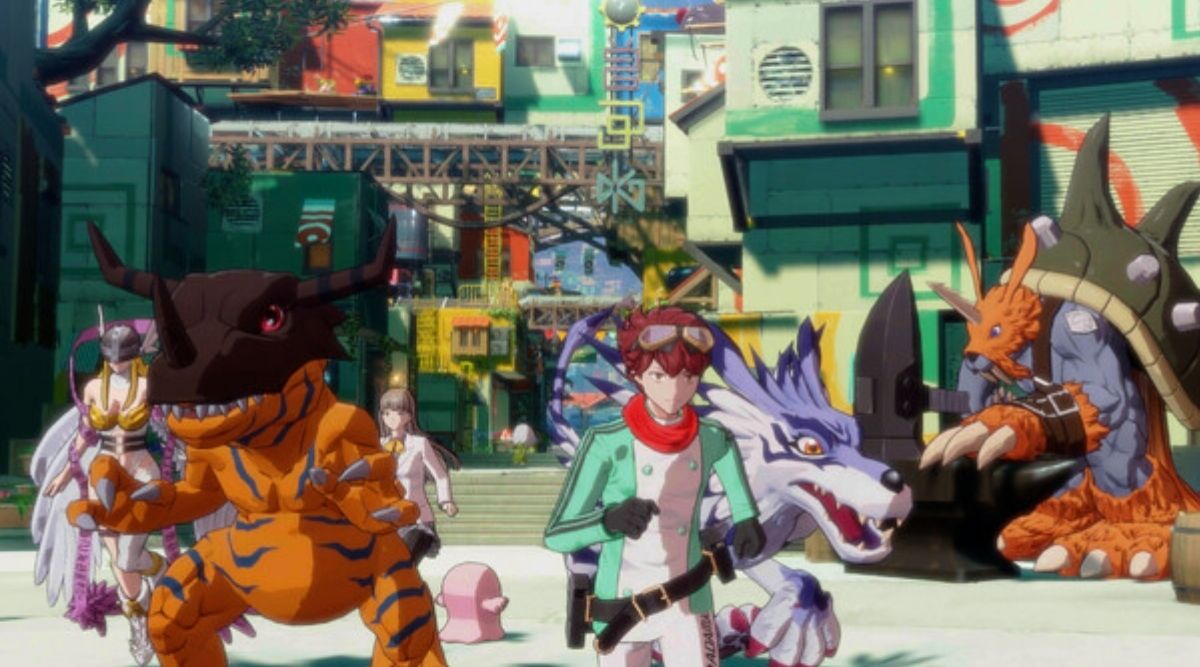
The gameplay loop is fun from the start, but watching it evolve makes it impossible to put down. I found myself constantly de-digivolving my Digimon to try out the new evolution paths in search of my perfect team. After over 40 hours in the game, I still never landed on a team I felt was completely perfect. This is a testament to the numerous options available and the game’s well-designed nature, as it never forces players down a single route.
Digimon Story Time Stranger is a perfect entry point for newcomers to the Digimon world, without alienating long-time fans. The fleshed-out story and well-rounded combat and evolution systems are easy to pick up but difficult to truly master. This is Digimon at its best, and it should be what brings a new generation into the franchise.
Digimon Story: Time Stranger releases on October 3rd on PlayStation 5, Xbox Series X|S, and PC.
Digimon Story: Time Stranger
-
Rating - 9/109/10
TL;DR
Digimon Story: Time Stranger is a perfect entry point for newcomers to the Digimon world, without alienating long-time fans.

